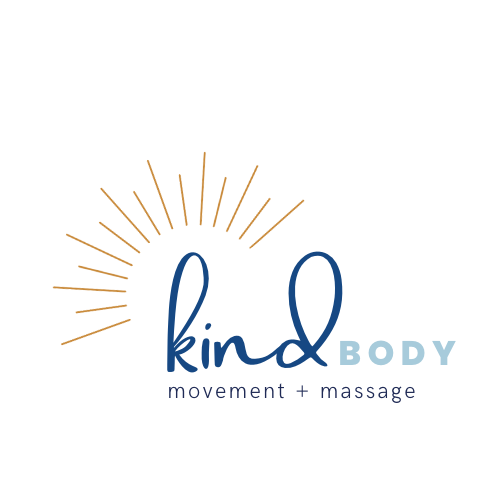Distance Looking for Eye Health
Plus 8 more tips to reduce eye strain
It happens time and time again…
I “come to” staring at my computer, my contacts vacuum sealed to my eyes, my upper body gradually tipping toward the screen.
I notice my eyes are dry and starting to hurt. My shoulders feel stuck and my neck feels cricked. When was the last time I blinked?
Eye strain ain’t no joke and can even show up as neck and shoulder tension!
Sometimes eye strain presents as…
Sore, tired, burning, or itching eyes
Watery or dry eyes
Blurred or double vision
Headache
Sore neck, shoulders, or back
Increased sensitivity to light
Difficulty concentrating
Feeling like you cannot keep you eyes open
Thankfully, there are a handful of “best practices” you can use to soothe your tired eyes.
What causes eye strain?
Not only do eyes have muscles that attach to the outside of the eyeball that help us look around, eyes also have muscles inside them that help us focus.
This muscle inside your eyeball is called the ciliary muscle.
When we look at something close to us, the ciliary muscle gets stretched long like a rubber band.
When we look at something far away, the ciliary muscle slackens and shortens.
This muscle action helps us to focus and see clearly at whatever distance we’re looking from.
Just like any other muscle in the body, the ciliary muscle benefits from varied use.
Think about it: if you walked around with your arms bent at the elbows all the time, your arms would start to get tired and maybe even hurt!
Many of the things we look at on a daily basis are at a close range, especially while at work or school or just when indoors generally.
As a result, the ciliary muscle spend a lot of time in the position of that stretched out rubber band. No wonder our eyes are tired!
Other factors including lighting, air flow (like from a fan or air conditioner), and your overall level of stress or fatigue can make eye strain worse.
If you live in a city, you might not be able to gaze for long distances out the window.
Distance looking for healthy eyes
Because we spend most of our days indoors, looking at close range, we need to add distance looking to our self-care routine.
Remember that looking far away actually helps your eye muscles slacken and relax.
The standard suggestion here is the 20-20-20 rule:
Every 20 minutes, look at least 20 feet away for at least 20 seconds.
I consider this rule to be a baseline and here’s why:
20 feet isn’t really that far away.
Coming back to the example of walking around with your arms bent at the elbows…
If having your elbows bent at 90 degrees is the equivalent of looking at something right in front of you, looking at something only 20 feet away could be like extending your arms but not straightening them (think 135 degrees at the elbow joint as opposed to 180).
There’s still more room to move!
Looking even farther away would be equivalent to extending your arms straight.
Get your kids involved with “What’s the farthest thing you can see?”
How can I make the 20-20-20 rule work for me?
Your environment moves you (or keeps you from moving).
If you’re working in an urban area, your view might be blocked by tall buildings or infrastructure.
If you’re working from home in a rural area, chances are, you’ll have the ability to gaze out at longer distances.
Similarly, if you live in a valley, you won’t be able to see as far away as if you lived on the top of a mountain.
Your workspace will shape your ability to use the 20-20-20 rule for your self-care.
Depending on the size of your work space, 20 feet may be across the room or down the hall—you might not have an unobstructed view that’s long enough.
If you want to get precise, you could always use a tape measure or approximate with your own feet to discover how far away 20 feet actually is. That way, you’ll have a solid idea of how far away your baseline is.
Ideally, you’ll be working near a window. This way, you can pause and look even further away (while also getting some natural sunlight into those peepers).
If you’re like me and you get into a serious focus trance, it could be helpful to set reminders on your phone or computer to go off every 20 minutes. Setting up the reminders will take a bit of time on the front end but then you’ll be free to focus on your work knowing that you’ve put this self-care practice on autopilot.
Again, 20-20-20 is a baseline. If you notice your vision is getting blurry or you’re starting to feel tension creeping into your neck and shoulders, you may need to pause for a break sooner.
Do the best you can with what you’ve got. Every 20 minutes, look as far away as you can for at least 20 seconds. And remember, you can also look down or up instead of just toward the horizon.
Other tips and exercises to reduce eye strain and promote eye health:
Spend more time outdoors.
Our eyes evolved under the exposure to sunlight—not fluorescents. While outside, there’s a variety of things to focus on, both near and far.
If you’re a bookworm, consider reading more outside. The natural light will be brighter than the lamp in your cozy reading nook and you’ll get the added benefits of outside time.
Make it a game.
When I notice my kids have been looking at books or art or TV for a while, I’ll usher them outside or to a window and ask, “What’s the farthest thing you can see?”
My daughter has even started taking her own looking breaks and reminding me to join her as well!
Pirate Eyes
Do you have one eye that’s stronger or weaker than the other?
For me, it’s my left eye that’s the weak one.
I’m speculating here, but it does seem that my left eye (which also can’t see as far as my right eye) gets tired more quickly. It makes me feel as though part of my brain is turning off!
I routinely spend time looking out the window or far away with my right eye closed. I make sure to look up, down, and all around while just gazing from my left eye. When I finally open my right eye back up, my vision feels clearer and my brain feels more awake.
The Look Around
Not only do we spend a lot of time looking at close range, we also spend most of our time looking in the same direction (usually straight ahead).
Part of your eye break time can include taking a look around.
Keeping your neck and head still, how far can you look to the left, right, up, and down? Now keep your eyes still and let your neck turn your head to shift your gaze. Now, keep your neck and shoulders still and rely on your spine to help you take a look around.
An eye break can become a whole body break!
The Side Eye
This is one of my favorite eye exercises because it also helps me feel more calm and centered.
Keep your neck and head still, look as far as you can to the left. Take some deep breaths and watch and wait for a sign that your body is relaxing: maybe a yawn, a tummy gurgle, or a spontaneous sigh.
Then, return your eyes to the center.
Take a deep breath and then look (using just your eyes) as far as you can to the right. Same thing here: take some deep breaths and watch for a sign that your body is relaxing.
Return your gaze to center and enjoy a renewed sense of peace.
Close your eyes and tune into your other senses.
Tune into your other senses.
Give your eyes a break by closing them. Then, tune into your other senses—what can you hear, feel, taste, and smell?
Think “Big Picture”
Let your gaze soften to take in a panorama “big picture” view. Without moving your eyes or looking around, just hold the big picture in your gaze and maybe even discover what details you can find.
Peripheral Peering
How’s your peripheral vision? With your gaze straight ahead, what details can you notice about the view to your left and right sides. How “wide lens” can you go?
When you’re used to looking at close range, distance looking can help your eyes relax and move more.
Conclusion
Eye strain can have a huge effect on your day to day experience, as well as your overall feeling of stress and tension.
Using the 20-20-20 rule as a baseline can provide eye strain relief and peace of mind.
What’s more, adding one of the eye exercises above can help you get your eyes moving in ways that reduce stress, ease pain, and help you feel more at home in your body.











